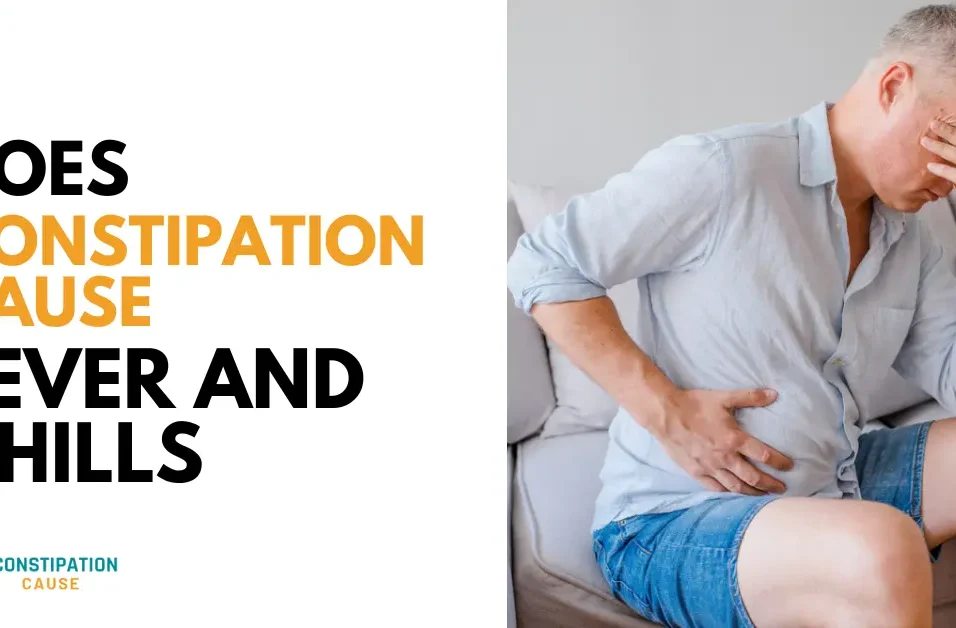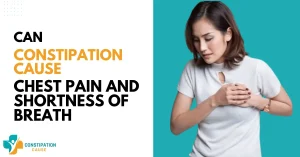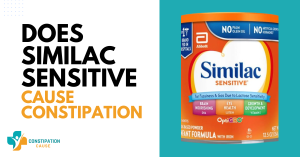Scoliosis, a curvature of the spine often associated with skeletal irregularities, prompts questions about its potential impact on various aspects of health.
Among these health concerns, one of the most crucial query is; “Can scoliosis cause constipation?”
Well, this article aims to discuss in detail the potential connection between scoliosis and digestive issues, and elaborate how can scoliosis cause constipation problems in individuals with this spinal condition.
So, let’s get started!
Is there a link between scoliosis and constipation?
Here is how scoliosis affect your bowels:
Anatomy of Scoliosis: Scoliosis involves a lateral curvature of the spine, creating a three-dimensional deformity. Commonly observed in the thoracic or lumbar regions, scoliosis affects the alignment of vertebrae, ribs, and surrounding structures.
Impact on Digestive System: The spinal curvature characteristic of scoliosis can lead to compression and distortion of the thoracic and abdominal cavities. This alteration in the anatomical structure may impact the digestive system, potentially contributing to constipation.
Mechanical Effects on the Gastrointestinal Tract:
- Reduced Intra-Abdominal Space: The lateral curvature of the spine may reduce the intra-abdominal space available for the digestive organs, potentially influencing the efficiency of bowel movements.
- Altered Position of Organs: Scoliosis can displace organs within the abdominal cavity, affecting their normal functioning and potentially contributing to constipation.
- Nerve Compression: Spinal curvature may exert pressure on nerves that regulate gastrointestinal functions, leading to disruptions in peristalsis and bowel regularity.
Different Types of Scoliosis:
Idiopathic Scoliosis:
- Description: The most common type, idiopathic scoliosis, occurs without a clear cause and often develops during adolescence.
- Potential Impact on Constipation: Idiopathic scoliosis may influence constipation through mechanical effects on the spine, altering the position of abdominal organs and potentially affecting gastrointestinal function.
Congenital Scoliosis:
- Description: Present at birth, congenital scoliosis results from abnormal spinal development in utero.
- Potential Impact on Constipation: The structural abnormalities associated with congenital scoliosis may lead to variations in the positioning of abdominal organs, potentially contributing to constipation.
Neuromuscular Scoliosis:
- Description: Arising from neuromuscular disorders such as cerebral palsy or muscular dystrophy, neuromuscular scoliosis involves muscle imbalance affecting spinal alignment.
- Potential Impact on Constipation: Neuromuscular scoliosis may influence constipation through both structural and neuromuscular factors, as underlying conditions can affect nerve function and gastrointestinal motility.
Scoliosis and Digestive Issues:
While constipation is a commonly discussed digestive concern associated with scoliosis, this spinal condition may extend its influence to other gastrointestinal issues, adding a layer of complexity to digestive health.
Conditions Associated with Scoliosis:
- Acid Reflux:
- Mechanical Compression: Scoliosis-induced alterations in the anatomy can contribute to mechanical compression on the stomach, potentially leading to acid reflux or gastroesophageal reflux disease (GERD).
- Bloating:
- Organ Displacement: The displacement of abdominal organs due to spinal curvature may disrupt normal digestive processes, contributing to increased gas production and bloating.
- Irritable Bowel Syndrome (IBS):
- Nerve Compression and Function: Scoliosis may exert pressure on nerves that regulate bowel function, potentially influencing the development or exacerbation of irritable bowel syndrome.
Treatment Options for Scoliosis-Related Constipation:
Constipation arising from scoliosis can be effectively managed through a combination of medical, dietary, and lifestyle interventions, tailored to address both the spinal curvature and its impact on digestive function.
Medical Interventions:
- Medications:
- Stool Softeners and Laxatives: Depending on the severity of constipation, healthcare professionals may recommend medications to soften stools or promote bowel movements.
- Physical Therapy:
- Targeted Exercises: A physical therapy regimen focusing on exercises to improve spinal mobility and strengthen core muscles can indirectly support bowel regularity.
Dietary Interventions:
- Fiber-Rich Diet:
- Increased Fiber Intake: Consuming a diet rich in fiber from fruits, vegetables, and whole grains can add bulk to stools and facilitate smoother bowel movements.
- Adequate Hydration:
- Water Consumption: Ensuring sufficient water intake is crucial to prevent dehydration, allowing for the softening of stools and easing bowel movements.
Lifestyle Modifications:
- Regular Physical Activity:
- Encouraging Movement: Engaging in regular physical activity helps stimulate bowel movements and supports overall gastrointestinal health.
- Posture Awareness:
- Maintaining Good Posture: Being mindful of posture, especially during sitting and standing, can reduce pressure on the abdomen and potentially alleviate constipation.
Scoliosis-related constipation symptoms:
Gastrointestinal issues in scoliosis can be noticed by observing the following signs:
- Uneven Shoulders:
- Observation: Noticeable differences in shoulder height when the individual is in a relaxed position.
- Asymmetrical Waist:
- Visual Clues: An uneven waistline or hips may suggest potential spinal curvature.
- Rotation of the Spine:
- Visible Twist: In severe cases, the spine may exhibit a noticeable rotation, leading to a twisting appearance.
- Prominent Shoulder Blade:
- Visible Protrusion: One shoulder blade may appear more prominent than the other.
- Uneven Leg Length:
- Discrepancy: An apparent difference in leg length when standing.
- Back Pain or Discomfort:
- Subjective Complaints: Individuals may experience back pain or discomfort, particularly as the curvature progresses.
Importance of Early Detection:
- Preventive Measures: Early detection allows for timely intervention, potentially preventing the progression of scoliosis.
- More Effective Treatment: Initiating treatment in the early stages may lead to more effective and less invasive interventions.
- Addressing Underlying Causes: Identifying scoliosis early enables healthcare professionals to explore potential underlying causes and tailor treatment accordingly.
Screening and Monitoring:
- School Screenings: Routine scoliosis screenings in schools are essential for early identification, emphasizing the importance of regular check-ups.
- Family History Consideration: Individuals with a family history of scoliosis should be particularly vigilant, as genetic factors may increase the risk.
Tips for Managing Scoliosis-Related Constipation
1. Consult with Healthcare Professionals:
- Regular communication with healthcare providers, including orthopedic specialists and gastroenterologists, ensures a tailored approach to managing constipation associated with scoliosis.
2. Incorporate Regular Physical Activity:
- Engaging in consistent physical activity, including exercises recommended by a physical therapist, can stimulate bowel movements and promote overall gastrointestinal health.
3. Maintain Optimal Posture:
- Mindful posture awareness, especially during prolonged periods of sitting, contributes to minimizing abdominal pressure and reducing the likelihood of constipation.
4. Hydration is Key:
- Ensure adequate hydration by drinking enough water throughout the day. Proper hydration softens stools, easing bowel movements.
5. High-Fiber Diet:
- Embrace a diet rich in fiber from fruits, vegetables, and whole grains to add bulk to stools and facilitate regular bowel movements.
6. Consider Stool Softeners or Laxatives:
- Under the guidance of healthcare professionals, incorporate stool softeners or laxatives as recommended to alleviate constipation.
7. Regular Check-Ups:
- Schedule regular check-ups with healthcare providers to monitor both spinal health and digestive well-being, allowing for timely adjustments to treatment plans.
8. Mindful Medication Use:
- If medications are prescribed for scoliosis or associated conditions, be aware of potential side effects, including their impact on digestive function.
9. Collaborative Approach:
- Collaborate with a multidisciplinary team, including physical therapists, nutritionists, and healthcare providers, for comprehensive care addressing both scoliosis-related concerns and digestive health.
Conclusion:
In conclusion, this article delves into the multifaceted relationship between scoliosis and digestive issues, particularly focusing on the potential connection to constipation. Recognizing that spinal curvature, especially in the context of different scoliosis types, may influence various digestive issues beyond constipation, underscores the need for comprehensive care. Emphasizing the significance of early detection through vigilant symptom recognition and screenings, we highlight the proactive measures that enable timely interventions. Addressing both the spinal and digestive aspects of scoliosis ensures a holistic approach, enabling healthcare professionals to tailor effective treatments and improve the overall well-being of individuals impacted by this condition.
Frequently Asked Questions
What is scoliosis, and how does it affect the spine?
Scoliosis is a spinal condition characterized by a lateral curvature, and its impact on the spine involves abnormal sideways curvature.
Can scoliosis develop in adults, and is it related to constipation?
Yes, scoliosis can develop in adults, and while it may be associated with constipation, the relationship is complex and varies among individuals.
Are there any non-surgical treatments for scoliosis-related constipation?
Non-surgical treatments for scoliosis-related constipation include medical interventions, physical therapy, and lifestyle modifications tailored to address both spinal curvature and digestive symptoms.
How is scoliosis diagnosed?
Scoliosis is diagnosed through physical examinations, imaging studies (such as X-rays), and an assessment of medical history to determine the extent and nature of the spinal curvature.
What are the potential complications of untreated scoliosis?
Untreated scoliosis can lead to complications such as worsening spinal deformity, pain, respiratory issues, and potential psychological impact due to altered body image.
Are there exercises that can alleviate constipation in individuals with scoliosis?
Yes, exercises recommended by healthcare professionals, particularly those focusing on improving spinal mobility and core strength, can contribute to alleviating constipation in individuals with scoliosis.









Leave feedback about this